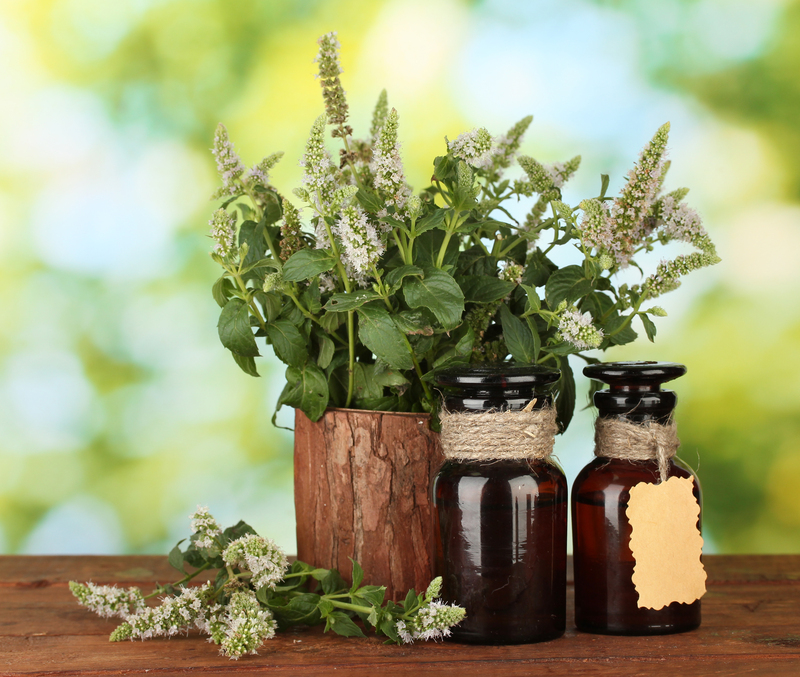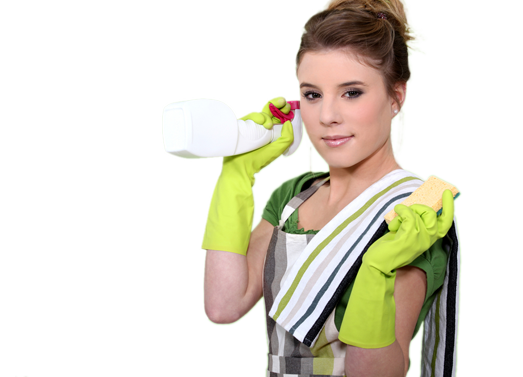Transform Your Home with Superior Air Quality
Posted on 24/09/2025
Transform Your Home with Superior Air Quality: A Comprehensive Guide
Is the air in your home as fresh and healthy as it could be? Many people overlook the importance of indoor air quality, yet it plays a profound role in your comfort, well-being, and even long-term health. By focusing on superior air quality in the home, you can create a living space that supports vibrant health and exceptional comfort. In this in-depth guide, we'll explore how to transform your home with cleaner, healthier air, the benefits of optimized air quality, and actionable strategies to achieve a fresher living environment.

Why Superior Indoor Air Quality Matters
Your home should be a sanctuary--a place where you can breathe easy and safely. However, the reality is that indoor air can be up to five times more polluted than outdoor air, according to the Environmental Protection Agency (EPA). Poor indoor air quality can negatively impact your health, exacerbate allergies, and contribute to respiratory illnesses.
- Health Protection: Clean air reduces the risk of asthma, allergies, and respiratory infections.
- Enhanced Comfort: Pure air minimizes odors, dust, and pollutants, making your environment more comfortable.
- Increased Productivity: Studies reveal that good indoor air quality improves focus and reduces fatigue.
- Better Sleep: Breathing easy at night boosts sleep quality and overall wellness.
Now, let's examine the factors that influence the air quality in your home.
The Common Culprits Behind Poor Home Air Quality
Understanding what contributes to indoor air pollution is key to addressing the problem at its source. Common pollutants include:
- Dust and Dust Mites: These tiny particles accumulate in carpets, bedding, and upholstery, triggering allergies and respiratory issues.
- Mold and Mildew: High humidity and water leaks encourage the growth of mold, which releases harmful spores into the air.
- Volatile Organic Compounds (VOCs): Paints, cleaning agents, air fresheners, and even some furniture can emit VOCs that degrade indoor air.
- Pet Dander: Animal fur and skin flakes are significant allergens for many people.
- Smoke: Cigarette smoke and smoke from burning candles or fireplaces introduces hazardous compounds.
- Pollen: Even indoor air isn't immune to seasonal pollen, especially if windows are left open.
By identifying these sources, you're one step closer to creating excellent indoor air quality.
Benefits of Superior Air Quality in the Home
When you improve home air quality, you aren't just making your space cleaner--you're securing tangible health and lifestyle benefits:
- Healthier Breathing: Cleaner air is free of particulates and allergens that can irritate airways or worsen pre-existing conditions.
- Fewer Allergens: Superior air quality eliminates many common triggers for asthma and allergies, reducing medication use and flare-ups.
- Reduced Absenteeism: Families in homes with better air quality take fewer sick days due to respiratory infections or headaches caused by pollutants.
- Preserved Home Value: Mold, mildew, and persistent odors can damage your home's structure and value--clean air is an investment in your property.
Let's dive into proven strategies to achieve superior indoor air quality for your home.
Proven Strategies to Enhance Indoor Air Quality
1. Regular Cleaning and Dust Control
Dust and allergens quickly build up in the home. Effective cleaning routines can cut pollutants dramatically:
- Vacuum frequently using HEPA-filtered vacuums to trap dust, pet dander, and even mites.
- Damp-dust surfaces instead of dry-dusting to minimize airborne particles.
- Launder bedding and curtains weekly, as textiles harbor allergens.
- Minimize clutter to reduce dust-collecting surfaces.
2. Control Humidity for Mold Prevention
Excessive moisture is the enemy of superior air quality. Keep interior humidity between 30-50% with these tips:
- Use dehumidifiers in damp areas like basements or bathrooms.
- Install exhaust fans in kitchens and bathrooms to expel steam and moisture.
- Fix leaks immediately to prevent mold growth.
3. Upgrade Your Air Filtration
From affordable filters to advanced purification, stronger filtration is a game-changer for premium air quality at home. Consider these options:
- Change HVAC filters every 1-3 months, and choose high-efficiency varieties (MERV 13 or higher).
- Use portable air purifiers equipped with true HEPA and activated carbon filters in bedrooms or living areas.
- Consider whole-home air [purifiers](https://www.epa.gov/indoor-air-quality-iaq/air-cleaners-and-air-filters-home) for a comprehensive solution--especially beneficial for allergy sufferers.
4. Choose Low-VOC and Eco-Friendly Products
Common household items often emit invisible gases. When possible:
- Opt for low-VOC paints, sealants, and finishes for DIY projects and renovations.
- Select natural cleaning supplies and skip aerosol sprays.
- Avoid synthetic air fresheners and candles, many of which emit pollutants.
5. Improve Home Ventilation
Even the best filters can't clean stagnant air. Proper ventilation dilutes indoor pollutants:
- Open windows on mild days to allow fresh air circulation (while monitoring outdoor air quality).
- Install trickle vents or energy recovery ventilators (ERVs) for continuous, balanced airflow.
- Utilize exhaust fans during and after activities like cooking or showering.
6. Introduce Air-Purifying Plants
Nature's own air cleaners, certain houseplants help absorb toxins and release fresh oxygen--though always double check they're safe for pets and children:
- Snake plant (Sansevieria trifasciata)
- Peace lily (Spathiphyllum)
- Spider plant (Chlorophytum comosum)
- Bamboo palm (Chamaedorea seifrizii)
*Tip: While plants help, they work best as a supplement to the above methods, not a replacement for proper cleaning or filtration.
7. Schedule Professional HVAC Maintenance
Your heating and cooling systems are central to superior home air quality. Annual check-ups ensure efficiency and reduce the risk of dust or mold circulation.
- Clean ducts regularly to remove accumulated debris and contaminants.
- Inspect for mold, especially in humid climates.
- Upgrade to smart thermostats that monitor and optimize air flow.
Creating a Breathable Sanctuary: Room-by-Room Tips
Living Room
- Vacuum rugs and upholstery regularly to prevent dust buildup.
- Discourage smoking indoors to avoid harsh chemicals and odors.
- Keep windows sealed during high-pollen seasons, but ventilate on clean-air days.
Bedroom
- Wash sheets, pillowcases, and blankets weekly in hot water.
- Use hypoallergenic bedding to minimize exposure to dust mites.
- Consider an air purifier for improved sleep and health.
Kitchen
- Vent stovetops and ovens to reduce cooking-related particulates and moisture.
- Store food securely to avoid attracting pests and mold growth.
- Clean up spills promptly to prevent bacteria and mildew.
Bathroom
- Run exhaust fans during and after showers.
- Wipe down surfaces to prevent mold and minerals from building up.
- Address leaks quickly to avoid damp conditions.
Modern Technologies for Elite Air Quality at Home
Smart home innovations make it easier than ever to control your air environment:
- Digital Air Quality Monitors: Measure levels of VOCs, CO2, particulate matter, and humidity in real time.
- Smart Vents & Filters: These optimize airflow intelligently, reacting to usage patterns and pollutant levels.
- Automatic Purifiers: Purifiers with built-in sensors activate only when needed, saving energy and ensuring consistently fresh indoor air.
Investing in these tools helps you take command of your atmospheric comfort and health more easily than ever.

Frequently Asked Questions About Home Air Quality
How often should I change my air filters?
A: Most experts recommend changing HVAC air filters every 1-3 months. Homes with pets, allergies, or high foot traffic may need more frequent replacements. Always follow manufacturer guidelines.
Do air purifiers really work?
A: Yes, modern air purifiers with true HEPA and activated carbon filters can remove up to 99.97% of airborne particles and harmful gases, significantly improving home air quality.
Is opening windows enough to ventilate my home?
A: Opening windows can help dilute pollutants, but may also let in outdoor pollutants (like pollen or smog). Best practice is to balance natural ventilation with filtration and monitor local air quality.
What are the signs of poor indoor air quality?
A: Symptoms include frequent sneezing, watery eyes, headaches, musty smells, visible mold, and aggravated asthma or allergy symptoms.
Conclusion: Invest in Superior Air Quality for a Healthier Home
Transforming your home with superior air quality is more than a trend--it's a crucial investment in your family's health, comfort, and happiness. By understanding the sources of indoor pollution and implementing smart, proactive strategies, you can create a sanctuary where every breath is refreshing. Whether through advanced filtration, mindful cleaning routines, or smart technology, the path to exceptional air quality at home is within reach. Make your home a place of pure air and vibrant wellness--because you and your loved ones deserve nothing less.
Breathe easy. Live better. Start your journey toward the very best air quality at home today!




